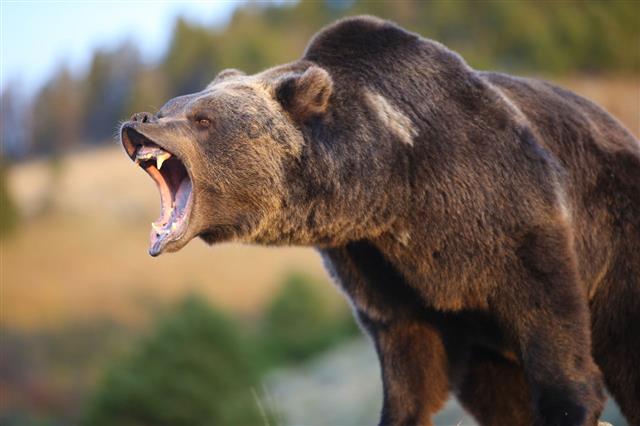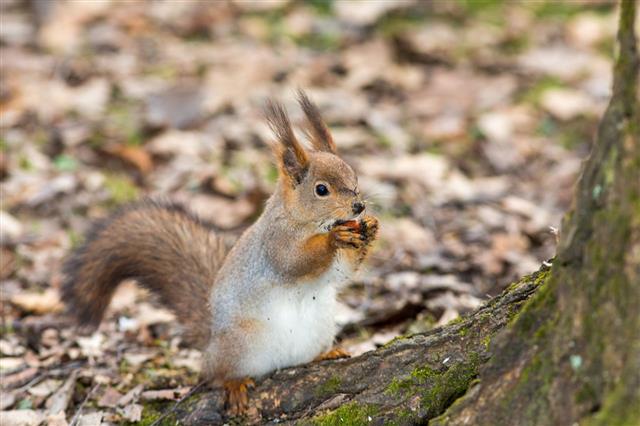
The article deals with information about Arctic tundra animals, in short. The different adaptations of these animals are also presented below.
The animals and plants of Arctic region are known for their adaptations which protect them from the harsh weather. We are all aware of creatures like polar bear and reindeer. However, there are a variety of animals found in this region. Let us understand more of these creatures and the Arctic tundra biome as a whole through following paragraphs.
Animals of Arctic Tundra
The descriptions of important Arctic tundra animals along with a short list of few other creatures is presented below.
Arctic Fox
The Arctic fox lives in burrows and inhabits the regions in which it is commonly found include Alaska and northern Canada. This fox is of small size with the length ranging from 10-12 inches. It weighs around 6-12 lbs. Arctic fox makes its burrows in places devoid of frost. The long bushy tail when wrapped around the body protects this creature from cold weather of Arctic tundra region. Being a scavenger, it doesn’t face much difficulty in finding food. If required, the Arctic fox follows the polar bears to obtain the left over food. This animal is an omnivore which feeds on birds, seaweeds, eggs, fish, berries, small mammals, insects, etc. The lifespan of Arctic fox is around 15 years.
Caribou
The caribou, a domesticated animal from the Arctic tundra region is also known as reindeer. The caribou belongs to deer family; antlers are the specialty of this creature. The brown coat of the caribou turns lighter in summer season and vice versa in winter. The animal possesses short legs and is sturdy. The average weight of male caribous ranges between 350 and 400 lbs, while that of the female ranges from 175-225 lbs. Height of the caribou (at withers) ranges from 35-55 inches. This animal has a characteristic ruff under the neck portion.
Musk Ox
It is the only animal to live in the extreme north i.e. Arctic region. The different areas in which musk ox is found are Sweden, Norway, Siberia, Greenland, Canada, Ellesmere Island, and Alaska. The 24 inch long hair of this animal protects it from the cold weather of Arctic tundra. The musk ox can reach the body length up to 7 feet, while its weight ranges from 396-880 lbs. This herbivorous creature is known to feed on stuff like willow, bearberry, crowberry, etc. The musk ox lives in herds and every group/herd has a dominant male (bull).
Polar Bear
It is the largest carnivore on earth and possesses two layers of protection to survive the cold weather of Arctic region. The body-length of polar bears range from 8-11 feet; height up to shoulders reaches a little over 5 feet. Male polar bears weigh around 880-990 lbs, while the females have a weight between 660 and 770 lbs. Ringed seals form the diet of polar bears. The polar bears also feed on lemmings, ducks, Arctic foxes and carcasses of walrus. The population of polar bears, owing to massive hunting, had reduced to mere 5000. However, with restriction on hunting and setting up of conservation projects, their number has gradually risen to 40,000. Names of other animals found in Arctic region are listed below.
| Arctic Tundra Animals |
| Ermine |
| Snowy Owl |
| Harlequin Duck |
| Grizzly Bear |
| Lemmings |
| Arctic Hare |
| Wolverine |
| Arctic Ground Squirrels |
| Rock Ptarmigan |
Adaptations
The Arctic tundra plants and animals have to adapt themselves in order to survive the harsh conditions of this region. For example, caribous possess hooves that are large and spreading. Balance of the body is maintained with these large hooves, as the caribou traverses marshlands and snow-clad areas. One of the special characteristics of these animals is that the body’s metabolic rate can be lowered in harsh weather; it is kind of a semi-hibernation condition. The thick blubber layer (4.5 inch.) protect polar bears from the extreme cold weather (as low as -34 °F). The hollow hair shafts of the fur of this animal also provide excellent insulation.
Description of the different Arctic tundra animals presented in this article should provide information about their characteristics, habitat, and diet. Few of these creatures have become endangered owing to the effects of global warming and human interference in this region. It is therefore, important to protect the fragile ecosystem of tundra biome and the world as a whole.












